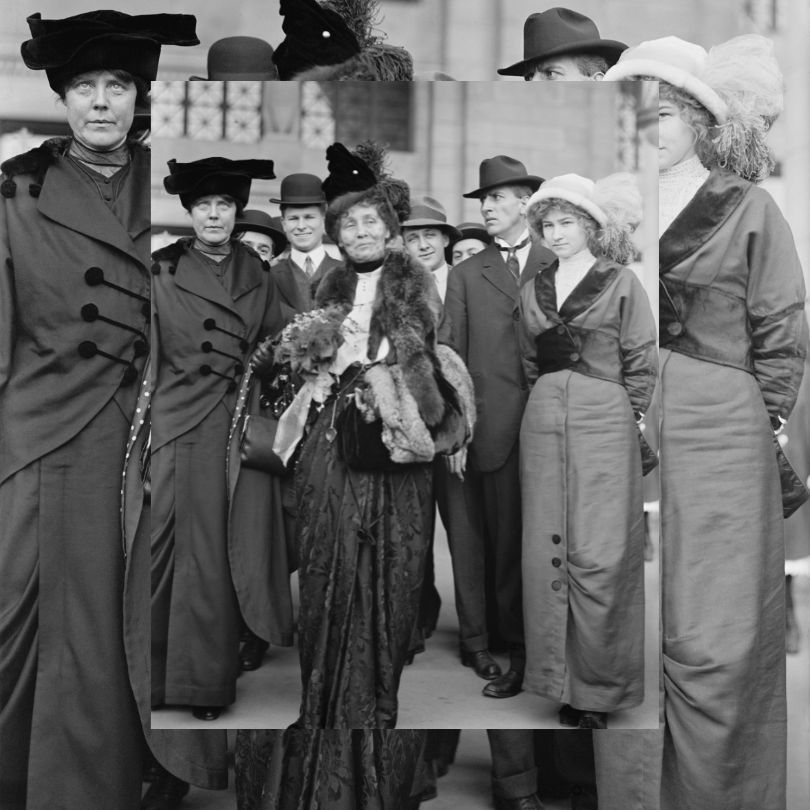
Emmeline Pankhurst is one of the most iconic and influential figures in British history. Her leadership in the women’s suffrage movement helped change the course of democracy in the United Kingdom. Through determination, courage, and unrelenting activism, she brought the issue of votes for women to the forefront of British politics — and refused to be ignored. 📢
In this article, we’ll explore who Emmeline Pankhurst was, what drove her activism, how the Women’s Social and Political Union (WSPU) led the charge for suffrage, and the lasting impact of her struggle for equality. If you're looking to understand the true story of the fight for women's voting rights in England, you're in the right place.
🧕 Who Was Emmeline Pankhurst?
Emmeline Pankhurst was born on July 15, 1858, in Manchester, England, into a politically active family. Her parents, Robert and Sophia Goulden, were firm believers in social reform. From an early age, Emmeline was exposed to political discussions about women's rights, slavery abolition, and democratic principles.
At the age of 20, she married Richard Pankhurst, a barrister and passionate supporter of women’s suffrage who had drafted early legislation promoting women’s rights. His influence played a significant role in shaping Emmeline’s political ideology. Together, they had five children, several of whom (like Christabel and Sylvia Pankhurst) would later become prominent suffragettes.
🎯 What Sparked the Women’s Suffrage Movement?
In the 19th century, British women were second-class citizens. They were denied the right to vote, own property (in many cases), and were expected to live under the authority of their fathers or husbands. Despite the growing social reform movements of the time, women were still excluded from the political process.
The women’s suffrage movement had been active since the mid-1800s. Groups like the National Union of Women's Suffrage Societies (NUWSS), led by Millicent Fawcett, had been lobbying peacefully for change. But by the early 20th century, many felt that progress was moving far too slowly.
That’s when Emmeline Pankhurst decided that it was time for more direct — and confrontational — action. ⚡
✊ Founding the WSPU: “Deeds, Not Words” (1903)
In 1903, Emmeline Pankhurst founded the Women’s Social and Political Union (WSPU) in Manchester. The WSPU’s motto was bold and clear: “Deeds, Not Words.” This new group broke with the peaceful methods of earlier suffrage organizations and believed that militant tactics were necessary to get results.
🔥 What Made the WSPU Different?
- Direct Action: WSPU members (often called suffragettes) organized protests, marches, and rallies to raise awareness.
- Civil Disobedience: They chained themselves to railings, disrupted political meetings, and smashed windows of government buildings.
- Hunger Strikes: Imprisoned suffragettes refused to eat, and many were force-fed — a practice that outraged the public and gained sympathy.
- Vivid Branding: The WSPU used powerful symbols and colors — purple (dignity), white (purity), and green (hope) — that made their movement instantly recognizable.
Under Emmeline’s leadership, the WSPU became a national force. Their boldness captured headlines and made it impossible for politicians to ignore the cause.
🏛️ Political Resistance and Public Reaction
While the suffragettes gained public attention, not everyone supported their methods. Many politicians — including Prime Minister H. H. Asquith — were firmly against women getting the vote. The government responded harshly, imprisoning suffragettes and cracking down on demonstrations.
At the same time, sections of the press and public viewed the suffragettes as unruly and even dangerous. Critics accused them of undermining law and order. However, others — particularly working-class women and progressive men — were inspired by their courage.
Despite the backlash, Emmeline stood firm. She believed that the spectacle and the sacrifice were necessary to wake the country up.
“We are here not because we are law-breakers; we are here in our efforts to become law-makers.” – Emmeline Pankhurst, 1908 🗣️
🛑 The Cat and Mouse Act (1913)
To deal with hunger-striking suffragettes, the government passed the Prisoners (Temporary Discharge for Ill Health) Act in 1913, nicknamed the Cat and Mouse Act. It allowed authorities to release weakened suffragettes from prison and re-arrest them once they recovered — a cruel game of control.
This strategy only increased public sympathy for the suffragettes and highlighted the brutality of the state toward peaceful protesters. Emmeline Pankhurst herself was arrested more than a dozen times, and each time, she emerged even more determined.
🌍 World War I and a Strategic Pause (1914–1918)
When World War I broke out in 1914, Emmeline made a dramatic decision: she suspended militant suffrage activities and encouraged women to support the war effort. Many suffragettes joined the workforce, taking on jobs in factories, transport, and agriculture, proving that women were essential to national life.
This move wasn't a betrayal — it was strategic. Emmeline understood that by showing loyalty and service to the country, women would strengthen their case for full citizenship.
The war effort helped shift public opinion, and politicians began to acknowledge women’s contributions.
✅ Victory: Women Get the Vote (1918 & 1928)
In 1918, Parliament passed the Representation of the People Act, granting the vote to women over the age of 30 who met certain property requirements. It wasn’t full equality, but it was a major step forward. More than 8 million women gained the right to vote. 🗳️🎉
A decade later, in 1928, the Equal Franchise Act granted equal voting rights to women and men — allowing all women over 21 to vote regardless of property. This was the fulfillment of a dream Emmeline had fought for her entire life.
🕊️ Emmeline Pankhurst’s Final Years and Legacy
Emmeline’s later years were marked by both personal and political changes. She had a falling out with her daughter Sylvia, who adopted socialist and anti-war positions that clashed with Emmeline’s more conservative shift in the 1920s.
In her final years, Emmeline even joined the Conservative Party and stood as a candidate, reflecting her complex political evolution.
She died on June 14, 1928, just weeks before women were finally granted equal suffrage. She didn’t live to cast her vote, but her life's work ensured that millions of women would.
🏛️ Lasting Impact: Why Emmeline Pankhurst Still Matters
Emmeline Pankhurst remains a symbol of resistance, courage, and transformation. Her unwavering determination reshaped British democracy and inspired global movements for gender equality.
Her legacy lives on in:
- Statues and memorials: Including the one unveiled in 2018 in Parliament Square, London.
- Educational curriculums: Her story is taught in schools across the UK and the world.
- Feminist movements: Modern activists often cite her as a role model.
- Popular culture: Films like “Suffragette” (2015) brought her struggle to a new generation.
Despite disagreements over her tactics, no one can deny her immense contribution to democracy.
🤔 FAQs About Emmeline Pankhurst and the Women’s Suffrage Movement
❓ Why did Emmeline Pankhurst use militant tactics?
Emmeline believed that peaceful protest had failed to make an impact. Her motto “Deeds, Not Words” reflected the urgency of the cause. She used direct action to force the issue into public debate.
❓ Was Emmeline Pankhurst a feminist?
Yes, though the term had different meanings in her time. She was a champion of women’s political rights and equality, though some modern feminists critique her views on class and race.
❓ How did the WSPU differ from other suffrage organizations?
Unlike the NUWSS, which used peaceful lobbying, the WSPU adopted militancy and public spectacle. Their confrontational style made them both controversial and influential.
❓ Did the suffragettes succeed?
Yes, though not immediately. The movement’s pressure, combined with women’s contributions during WWI, led to partial suffrage in 1918 and full suffrage in 1928.
📝 Conclusion: The Woman Who Dared to Fight
Emmeline Pankhurst wasn’t perfect. Her views evolved, and her methods sparked debate. But no one can deny that she was a trailblazer. She gave voice to millions of women who had been silenced. She challenged power with purpose. And she helped transform British society forever.
Her legacy isn’t just about votes — it’s about standing up, speaking out, and refusing to accept injustice. 💜
“I would rather be a rebel than a slave.” – Emmeline Pankhurst
Sources:
- Purvis, June. Emmeline Pankhurst: A Biography. Routledge, 2002.
- UK Parliament Archives
- BBC History
- The British Library
- Women's Suffrage timeline, Parliament UK
- The Guardian (2018): “100 Years of Women’s Suffrage”

